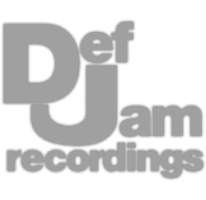Professional Analog Mastering.
Professional Analog Mastering.










Analog Obsession has released an impressive number of plugins, but 1 that doesn’t get discussed too much is LALA. As you can tell, it emulates the wildly popular LA2A hardware unit and, to my knowledge, is the only free emulation that actually sounds close.
Personally, I love that it offers both limiting and compression ratios like the original, a parallel mix dial to blend in the effect, and an external side chain as well as oversampling in case you need to compress heavily.
It has a super smooth sound, so let's listen to it on some bass.
Watch the video to learn more >
If you like free plugins, you’ve definitely heard of Tokyo Dawn Labs but might have missed Molotok, one of their newer releases.
It’s a compressor with a lot of character and flexibility - it offers 3 weighing options: alpha, which reacts immediately; beta, which uses 2 stages and is great for bus compression; and sigma, which delays the attack and lets transients through.
You can also find a balance between settings.
The attack and release can also be set to super quick times, allowing for wave-shaping distortion.
Let’s take a listen to it on some drums.
Watch the video to learn more >
A good free de-esser is hard to find, but T-D-Esser lets you select a frequency range, set a ratio for the compression, and determine the Q value with the sharpness dial. This gives you a lot more control than most stock de-essers, and even more than some paid-for de-essers.
T-Puncher is a transient shaper that you could use in conjunction with a de-esser to soften a sound source or use after a de-esser to bring some detail back to the high end of a vocal.
Let’s listen to both of them, first the de-esser, then the transient shaper.
Watch the video to learn more >
If you’ve checked out our mastering course, you’ll recognize GSat+, an amazing saturation plugin that I recommend as a free alternative for saturating a master.
But dpMeter5 and ISOL8 can also be incredibly beneficial to a mastering or mixing session.
dpMeter5 is a loudness meter with a lot more metrics than your stock meters. It can switch between RMS, EBU, or LUFS, and DIAL or LKFS measurement - and even supports measurement for 5.1 surround sound.
GSat+ offers controllable even and odd-order harmonics, multiple saturation types, and 5 channel modes to control what signal is saturated.
Lastly, ISOL8 is perfect for monitoring various frequency ranges, lets you monitor in-force mono, dim the signal, and a lot more.
Let’s listen to a signal being saturated while we monitor the loudness and isolate various frequency ranges.
Watch the video to learn more >
Codec is a unique distortion plugin - it’s the only one I’ve come across that introduces lossy distortion in a realistic way.
By varying the bit rate from 128kbps to 2kbps, we can make any signal sound like an okay-quality MP3 or a completely downgraded digital signal.
The loss function causes bits of info to drop out completely, while the bandwidth and crunch functions affect the frequency range and bit-depth distortion, respectively.Let’s listen to it and notice how it creates unique distortion that’s hard to achieve with regular downsampling or bit-depth reduction.
Watch the video to learn more >
This is, without a doubt, the best free tape emulation plugin out there, but I rarely see it being discussed.
The functions available and the quality of the emulation could easily make this a $100 plugin, but fortunately for us, it’s completely free.
From left to right, we have control over the input and output, the affected frequency range, and the affected image.
Then, we can dial in our saturation, some soft-knee compression, and mild EQ imparted by the tape.
Some less common tape functions, like gap, tape thickness, and azimuth, are included, while various distortion types, like the tape losing particles, can be emulated.
Frequency and pitch modulation can be synced to the BPM, and various hysteresis or tape memory algorithms can be selected.
All of these unique functions come together to create a really complex and well-rounded emulation of tape.
Let’s take a listen and notice how impressive this plugin is when everything is combined.
Watch the video to learn more >
I honestly love this plugin - it takes the mystery away from Pultec EQs and other emulations and lets you see how your signal is being changed.
Just insert 2 instances of the plugin - the first as a signal generator, the second to measure the change, and place the plugin you’re curious about in between the 2 instances.
Then, adjust any filters or parameters to see how the plugin affects the frequency response.
Granted, if you don’t want to know this info and instead solely use your ears, I totally understand, but I always like knowing what’s happening behind the scenes.
These plugins got some attention when they came out, but not much has been said about them since. They’re all free, of course, even though they probably shouldn’t be.
All 3 use stepped modulation similar to an arpeggiator - but instead of pitch or beat, they change a signal’s frequency response, panning, and gating, respectively.
My favorite is Panflow, which allows for quick panning based on the timing of the signal and, like the other 2 plugins, is synced to a track’s BPM.
Let’s listen to the 3 plugins on the same source back to back to hear how they can be used for quick and impressive creative processing.
Watch the video to learn more >
One of the most common questions I get in the comments is, ‘Where can I find a free tuning plugin,’ and for years, this has been the one I recommend.
MAutoPitch is similar to any autotune plugin but includes width and formant shifting functions.
It even has a built-in pitch detector in case you don’t know the key.
MConvolutionEZ is a fantastic convolution reverb plugin with hundreds of built-in responses and the ability to add new IRs.
And if you’re feeling creative, the routing lets you add reverb to just the mids, or the side, or the left, or right, etc.
So if you need to tune a vocal, or you just found some great impulse responses and want to add some reverb, you should absolutely check these out.
Let’s listen to a vocal being tuned, and then, reverberated with an impulse response.